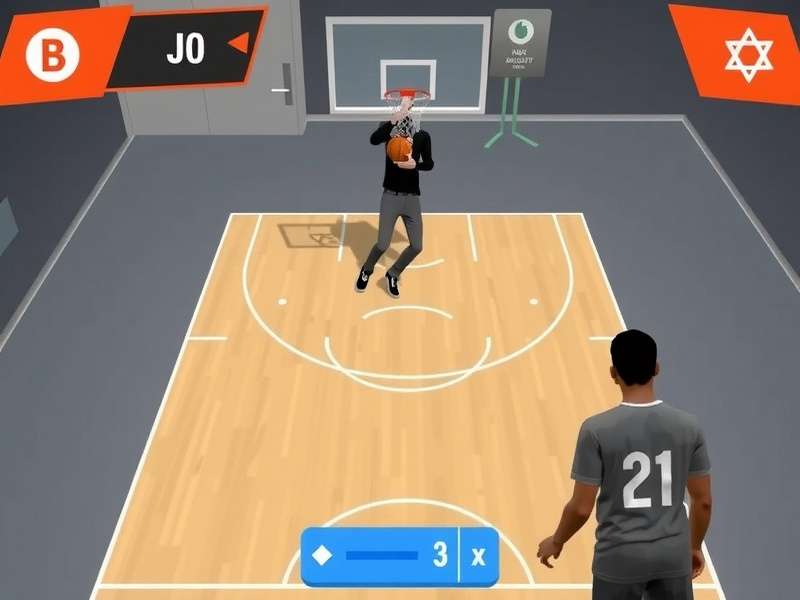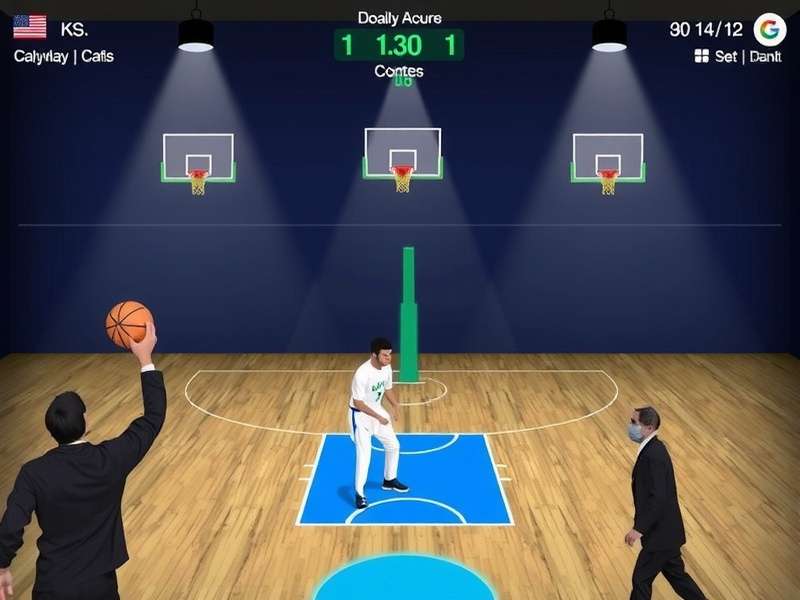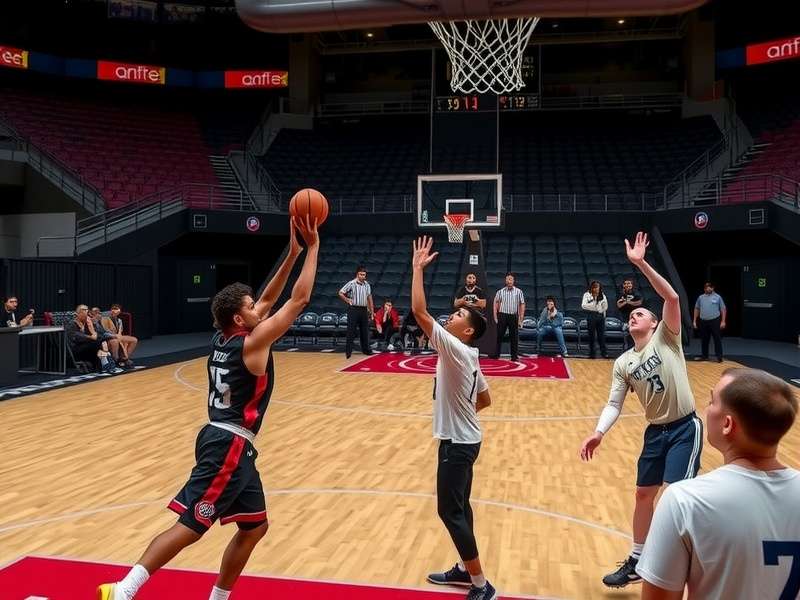Chai Basket Challenge: The Ultimate Indian Tea Game 🍵
Discover the fascinating world of traditional Indian street gaming culture
What is Chai Basket Challenge? 🤔
TheChai Basket Challengeis a traditional Indian street game that combines skill, strategy, and the beloved cultural element of chai (tea). This engaging physical game has been played across India for generations, particularly in rural areas and during festive occasions.
At its core, theChai Basket Challengeinvolves players attempting to throw small objects into baskets while maintaining balance and precision - skills that metaphorically represent the careful preparation of traditional Indian chai. The game tests hand-eye coordination, concentration, and strategic thinking.

The popularity of theChai Basket Challengehas grown significantly in recent years, with tournaments being organized in various Indian states. The game's simplicity and minimal equipment requirements make it accessible to people of all ages and socioeconomic backgrounds.
What makes theChai Basket Challengeparticularly special is its deep connection to Indian tea culture. Each element of the game symbolizes aspects of chai preparation - from the careful measurement of ingredients to the precise timing required for perfect tea brewing.
Historical Origins & Evolution 📜
The origins of theChai Basket Challengecan be traced back to rural Maharashtra in the early 20th century. Historical records suggest that tea plantation workers developed the game as a form of entertainment during their breaks. The initial version involved using actual tea leaves and small baskets used in tea processing.
Cultural Significance
The game represents more than just entertainment - it's a celebration of India's deep relationship with tea, which was introduced during British colonial rule but has since become an integral part of Indian identity and daily life.
As the game spread across different regions of India, local variations emerged. In Gujarat, players incorporated elements of traditional folk dances, while in Punjab, the game became faster-paced with musical accompaniment. The core mechanics of theChai Basket Challengeremained consistent, but regional flavors added diversity to gameplay.
The post-independence era saw the standardization of rules for theChai Basket Challenge. Community leaders and sports enthusiasts worked to create a unified rulebook that could be used in inter-village tournaments. This period marked the transition from informal pastime to organized sport.
In the 21st century, the digital revolution brought new attention to traditional games. Social media challenges featuring theChai Basket Challengewent viral, introducing the game to international audiences. This global exposure has led to adaptations of the game in other countries with tea cultures, such as England and China.
Official Rules & Gameplay 🎯
Understanding the rules is essential to properly enjoy theChai Basket Challenge. The game may seem simple at first glance, but strategic depth emerges with experience.
Basic Setup
• Players: 2-6 participants
• Equipment: 3 baskets of different sizes, 12 throwing objects (traditionally small cloth bags filled with sand)
• Playing Area: A marked rectangular space approximately 10x15 feet
Gameplay Procedure
1. Players stand behind the throwing line
2. Baskets are placed at varying distances (near, middle, far)
3. Each player takes turns throwing objects into baskets
4. Different baskets award different point values
5. The round ends when all objects have been thrown
Scoring System
• Small basket (farthest): 5 points per successful throw
• Medium basket (middle distance): 3 points
• Large basket (closest): 1 point
• Bonus: Consecutive successful throws multiply points

Advanced players of theChai Basket Challengeoften develop specialized throwing techniques. The "Chai Pour" technique involves a high-arcing throw, while the "Spice Drop" uses a rapid, direct approach. Mastering these techniques is key to competitive success.
The official rulebook for theChai Basket Challengerecognizes three skill levels: Beginner, Intermediate, and Expert. Each level has specific requirements for tournament participation and uses slightly modified rules to ensure fair competition.
Cultural Significance & Social Impact 🌍
TheChai Basket Challengeoccupies a unique space in Indian cultural heritage. Unlike many traditional games that have faded from popularity, this tea-based game has maintained relevance across generations.
In village communities, theChai Basket Challengeoften serves as a social equalizer. During community gatherings and festivals, people from different castes and economic backgrounds participate together, with skill at the game commanding respect regardless of social status.
Emotional Connection
For many Indians, the game evokes nostalgic memories of childhood, family gatherings, and simpler times. The sounds of laughter during gameplay and the shared experience create strong emotional bonds between participants.
The game has also found its way into Indian popular culture. Bollywood films have featured scenes with characters playing theChai Basket Challenge, and television game shows have adapted versions of the game for prime-time entertainment. This media exposure has introduced the game to urban audiences who might not have encountered it otherwise.
Educational researchers have studied theChai Basket Challengefor its cognitive benefits. The game requires mathematical calculation (quick scoring), strategic planning (which baskets to target), and physical coordination. Some schools in rural areas have incorporated modified versions into physical education programs.
From an anthropological perspective, the game represents the Indian concept of "jugaad" - innovative problem-solving with limited resources. The equipment is simple and inexpensive, making it accessible while still providing engaging gameplay. This aligns with broader Indian cultural values of resourcefulness and creativity.
Regional Variations & Modern Adaptations 🔄
The diversity of Indian culture is reflected in the numerous regional variations of theChai Basket Challenge. While the core concept remains consistent, local influences have created distinct gameplay experiences across the country.
North Indian Style
• Faster-paced gameplay
• Musical accompaniment
• Incorporates dance movements
• Popular during wedding celebrations
South Indian Style
• More strategic, slower pace
• Complex scoring systems
• Often played indoors
• Popular among all age groups
Modern urban adaptations of theChai Basket Challengehave emerged in recent years. Corporate team-building events often feature high-tech versions with electronic scoring, while mobile app developers have created digital simulations that maintain the spirit of the original game.

International versions of the game have appeared in countries with significant Indian diaspora communities. In the United Kingdom, the British-Indian community hosts annualChai Basket Challengetournaments, while in Canada, multicultural festivals often feature demonstration games to introduce the tradition to new audiences.
The future of theChai Basket Challengelooks promising as organizations work to preserve traditional games while making them relevant for new generations. Youth programs, digital archives, and international competitions all contribute to ensuring this piece of Indian cultural heritage continues to thrive.
Learning & Mastering the Game 📚
Becoming proficient at theChai Basket Challengerequires practice, patience, and understanding of fundamental techniques. Beginners should focus on developing consistent throwing motion before attempting advanced strategies.
Practice routines for theChai Basket Challengetypically start with stationary throws at the closest basket. As accuracy improves, players gradually increase distance and incorporate movement. Many experienced players recommend practicing with both hands to develop ambidextrous capability.
Mental preparation is as important as physical skill in competitiveChai Basket Challengeplay. Successful players develop pre-throw routines, learn to manage competitive pressure, and study opponents' techniques to identify weaknesses they can exploit.
Community learning plays a significant role in skill development. In traditional settings, experienced players mentor newcomers, passing down techniques that have been refined over generations. This oral tradition preserves the cultural knowledge associated with the game while allowing for innovation.
Tournaments & Competitive Scene 🏆
The competitive landscape for theChai Basket Challengehas evolved from informal village contests to structured tournaments with official recognition. Annual championships attract participants from across India and increasingly from international locations.
Major tournaments typically follow a seasonal calendar, with regional qualifiers throughout the year leading to national championships. The most prestigious event is the National Chai Basket Challenge Championship, held annually in Pune, which awards the title of "Chai Champion" along with significant prize money.
The professionalization of the sport has led to standardized equipment, certified referees, and anti-doping regulations. While some traditionalists express concern about losing the game's informal character, most acknowledge that structured competition has increased visibility and participation.
Youth competitions have become particularly important for sustaining interest in theChai Basket Challenge. Schools and community centers host inter-school tournaments, with successful young players sometimes receiving scholarships or other educational opportunities.
Community & Social Aspects 👥
Beyond competitive play, theChai Basket Challengeserves important social functions in Indian communities. The game often acts as a centerpiece for social gatherings, providing structured interaction while allowing for conversation and relationship building.
Intergenerational play is a distinctive feature of theChai Basket Challenge. It's common to see grandparents, parents, and children all participating together, with knowledge and techniques passing between generations naturally through shared experience.
Women's participation in theChai Basket Challengehas increased significantly in recent decades. While traditionally male-dominated, organized efforts to encourage female players have resulted in nearly equal participation rates in some regions, with women excelling at both recreational and competitive levels.
The game has also been adapted for players with disabilities, with modified rules and equipment making theChai Basket Challengeaccessible to people with mobility challenges or visual impairments. These inclusive versions maintain the core gameplay while accommodating different abilities.
Economic Impact & Commercial Aspects 💼
The growing popularity of theChai Basket Challengehas created economic opportunities at multiple levels. Local artisans craft traditional equipment, while larger manufacturers produce standardized tournament-grade sets.
Tourism connected to the game has developed in regions known forChai Basket Challengeexpertise. Visitors interested in traditional Indian culture often seek opportunities to learn the game from master players, supporting local economies through workshops and cultural experiences.
Media rights for major tournaments have become valuable properties, with television networks and streaming services broadcasting championships to domestic and international audiences. This media exposure generates revenue that supports player development and grassroots programs.
Corporate sponsorship has emerged as significant funding source for theChai Basket Challengeecosystem. Tea companies, in particular, recognize the natural alignment between their products and the game, with several major brands sponsoring tournaments and player development initiatives.